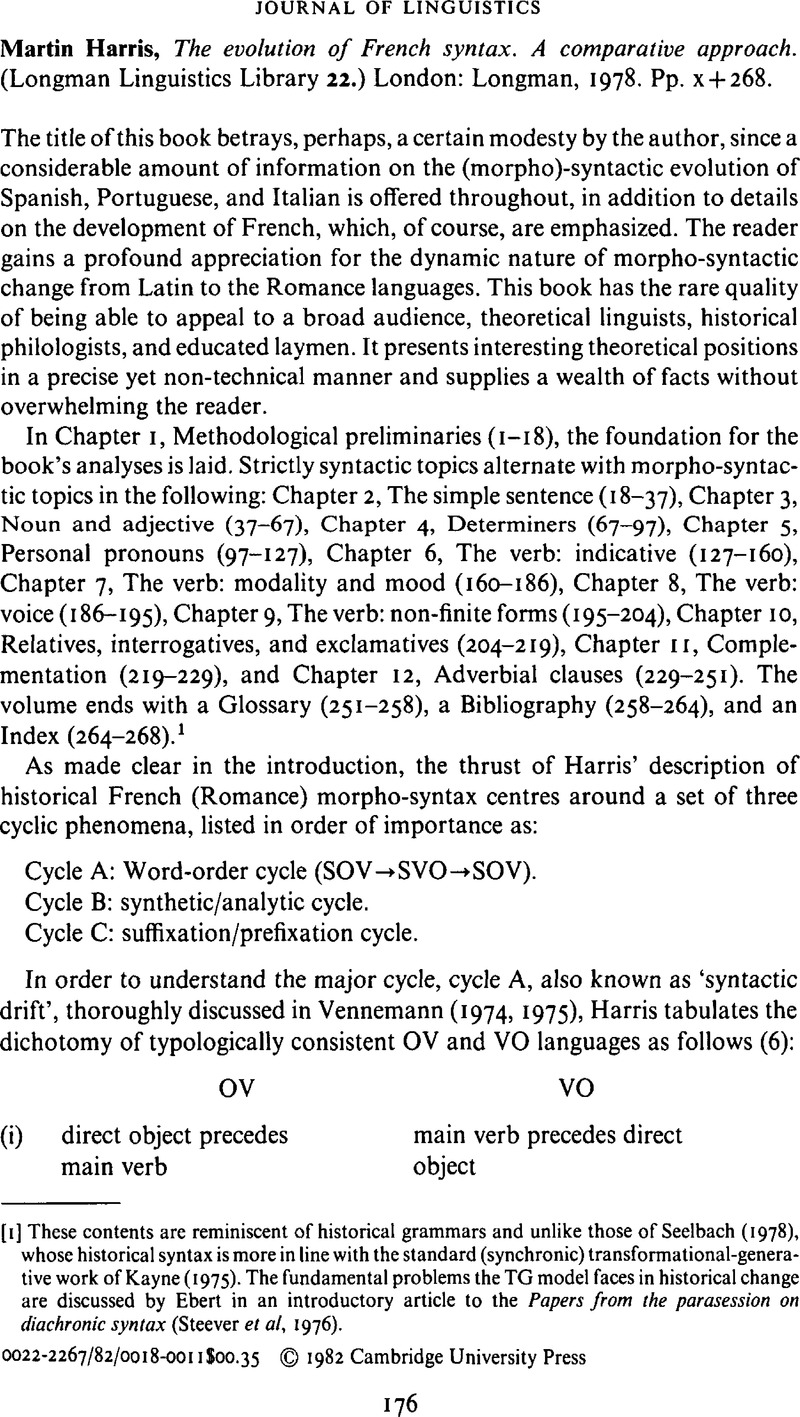No CrossRef data available.
Article contents
Journal of Linguistics - Martin Harris, The evolution of French syntax. A comparative approach. (Longman Linguistics Library 22.) London: Longman, 1978. Pp. x + 268.
Published online by Cambridge University Press: 28 November 2008
Abstract

- Type
- Reviews
- Information
- Copyright
- Copyright © Cambridge University Press 1982




